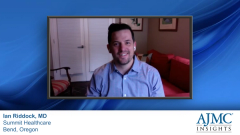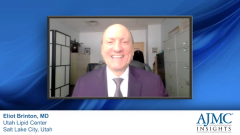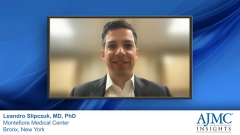
Defining “Optimal Care” for ASCVD Within Health Systems
Drs Riddock and Slipczuk define “optimal care” for ASCVD from a system-level perspective with the use of quality metrics.
Episodes in this series

Ian Riddock, MD: When it comes to having great care, the term “good care” is misleading to me, but I would like to say that we’re giving people optimal care. And optimal care is a cohesive strategy with our population health people and our entire system to prevent further events, further morbidity and mortality, and reducing total cost of care. In our organization, as I had mentioned earlier, we are an accountable care organization, this now that puts a lot of the burden on us in terms of managing risk. And it also makes prevention a worthwhile endeavor. In the past, some of us preventative specialists, like myself, have been frustrated by the lack of prevention and frankly, a lot of it is because it didn’t get paid for. You didn’t get reimbursed for the time and effort that it would take to ensure prevention. But now with these quality metrics, that’s where things are moving. And that’s where we’re being reimbursed by CMS [Centers for Medicare & Medicaid Services] and other payers for the good work that we do. And that good work is keeping people out of a hospital, keeping them away from expensive procedures, and costly and unnecessary trips to the emergency department or the hospital, and the costly expense of dealing with a catastrophic event, whether that’s a stroke or heart attack or heart failure event. From a population health standpoint, we can utilize our EHRs [electronic health record] to really identify at-risk patients and keep track of them. But we can use and develop these quality measures based on the best available scientific and clinical data in the most cost-effective manner to reduce disease burden and reduce the total cost of care. And that’s a win for everybody.
Leandro N. Slipczuk, MD, PhD: For a healthcare system to use population-level data to reach appropriate goals and to improve their quality metrics, it's essential, very important. If we assume that we're doing everything right in our institution, then we're missing an opportunity for improvement. And the problems why patients don't get to goal have some similarities in institutions and some things that are different. And different patients in different networks have different problems. For example, here in the Bronx [Bronx, New York], patients have certain problems and were trained at Cedars-Sinai in Los Angeles. There, they share problems, but they also solve problems that are different. Using data through the network, or from the area, is essential to understand this problem. Here, for example, it's easy. We have a software called Clinical Looking Glass that has been developed here that makes it easy for us, as a research project or quality improvement, to track our lipids in the whole institution. And that, I think, adds a lot of value on managing populations. But there's more and more data now coming on how to use this data to make a difference, how to improve outcomes. And if we think that patients will just get referred, and we just sit in the office waiting for patients, they're not at goal to reach our clinic. We won't reach the goal. We need to be more active, and we need to start using this data to target these patients, to find the patients that are not at goal, to find patients that are at high risk. And this high risk may be because they have multivessel disease on a CT [computerized tomography] coronary angiogram. It may be because they have a very high calcium score, and we just presented some data on this on ACC. It may be because they had an admission for ACS, and they have multiple comorbidities, or they even have multiple ACS events in their life. We are moving toward a world where we manage this data in order to reach the patients and not just sit back, waiting for patients to be referred.
For organizations that like this concept and are trying to set this up, step number 1 is finding a champion, like I was saying before, trying to have a lipid clinic or a lipid specialist that is identified this. We started calling it "lipid clinics," and now, it has evolved more into the concept of a cardiometabolic clinic because it's not just lipids. It's also for diabetes, to manage hypertension. Having an identified clinic that people can refer to. Finding the champion, then finding how these patients can be referred, I would be the second step, how they can be referred from the outpatient setting and how patients are identifying the inpatient can easily transition into this clinic. After that, then the next step is to start getting data from the institution, finding out what problems we have, what patients are not reaching the goal, and identifying the very high-risk patients. Once we identify that, then we can go the next step. And the next step is finding these patients actively and trying to get them to go. It has to be a strong support from the administration that we're lucky enough to have here in order to see the value of this and push resources and reach the level that we need to treat these patients. But this may seem like a big investment, but when we look at the cost that ASCVD [atherosclerotic cardiovascular disease] have in the US [United States], this has been determined to be… we were 130 billion in 2015, and it's going to reach over 300 billion by year 2035. It's a huge cost for the country. And as institutions and the healthcare transition more to a value-based care, this will be important. And as much as decreasing readmissions for heart failure are important, it's very important that we make sure that the patients reach goal. And they're not just having recurrent events because we haven't met the goal. Especially now that there's so many options in therapy, I think 10 years ago, or 20 years ago, it was a different scenario. But now there's so many options that if a patient just tries one statin and doesn't reach a goal, then we'll fail our job. It's important that someone is trained enough to know all the options to reach the best option for each patient.
This transcript has been edited for clarity.
Newsletter
Stay ahead of policy, cost, and value—subscribe to AJMC for expert insights at the intersection of clinical care and health economics.































































